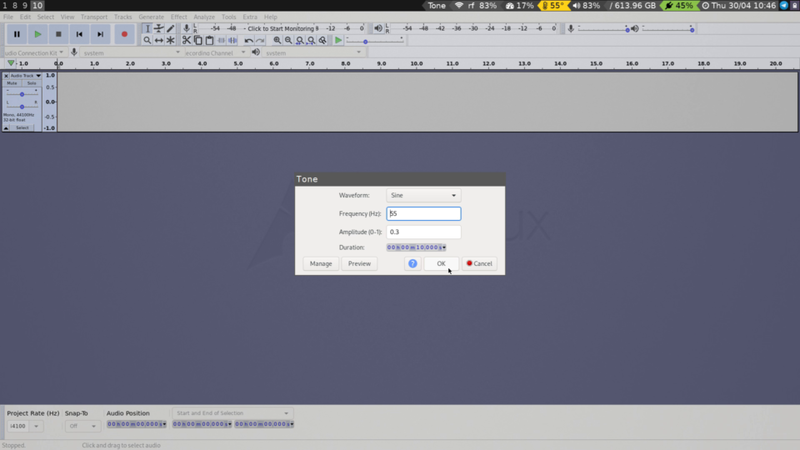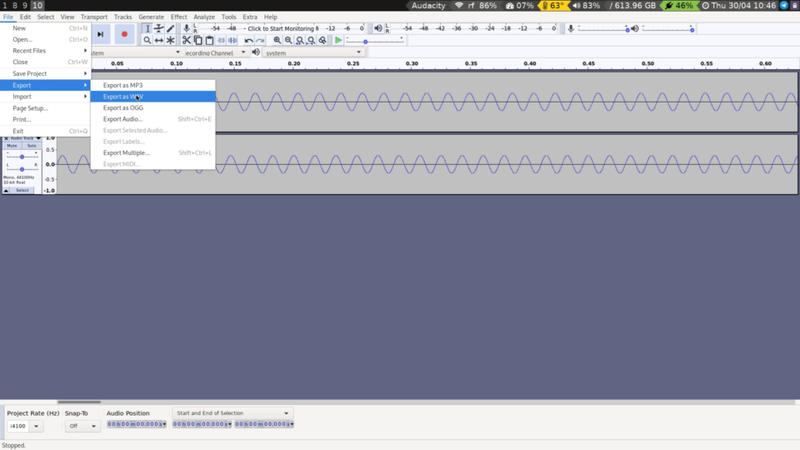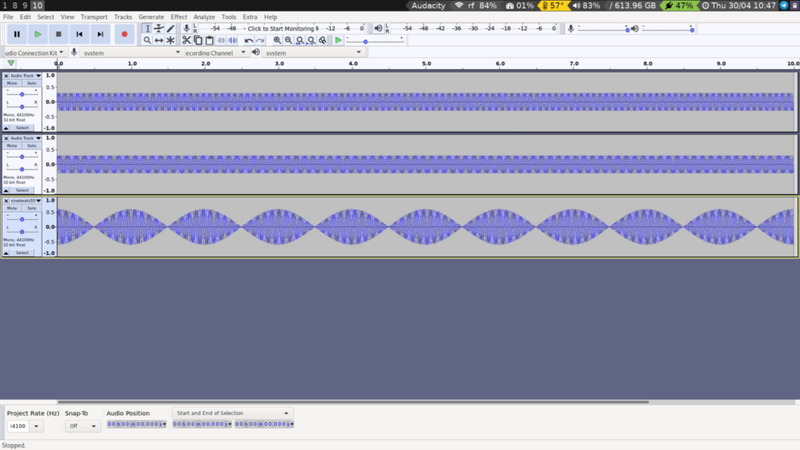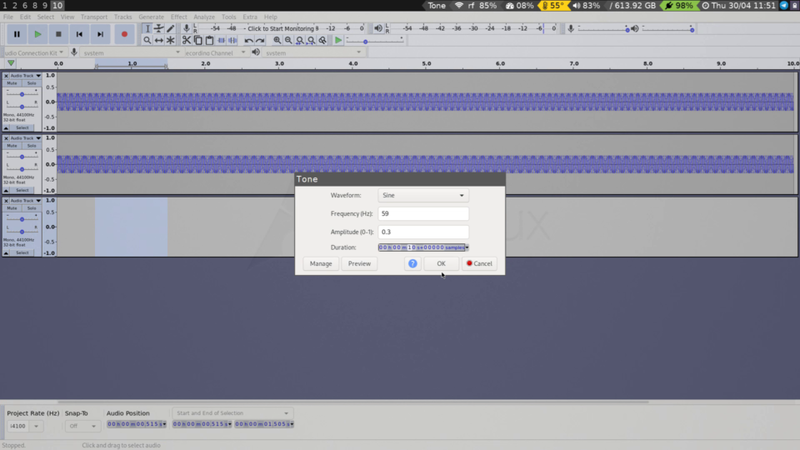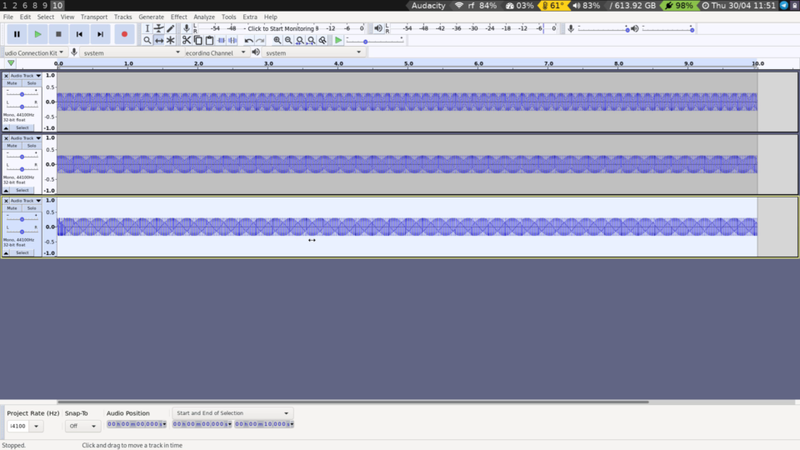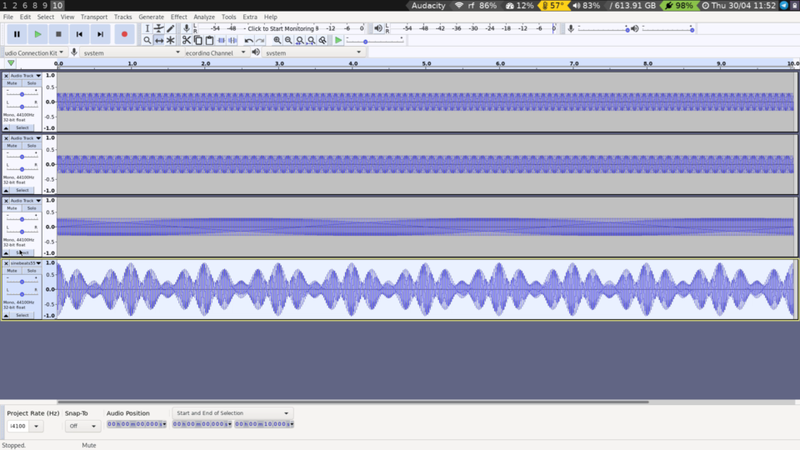18 - Beat Frequencies
Back to Overview
Table of Contents
The humble sine wave has quite a few interesting tricks up its sleeve. On its own it is usually not very interesting, but once you combine two or more sine waves, things can very quickly evolve into something useful.
One way to create scary-sounding sub-bass drones is to take advantage of a phenomenon called beat frequencies. If you add together two sine waves with almost the same frequencies, they will reinforce and cancel each other out periodically. The frequency of this period is the same as the difference between the waves' frequencies. So if you have one wave at 55hz and one at 56hz, you will get a pulse happening once per second (56hz - 55hz = 1hz).
Let's try this in practice. Open up an empty project in Audacity and go to Generate -> Tone. Select Sine as your Waveform, set the Frequency to 55, the Amplitude to 0.3, and the Duration to 10 seconds.
Next, repeat the exact same steps, but set Frequency to 56 instead. If you want to see what the resulting waveform looks like, you need to export the sound file. Go to File -> Export -> Export as WAV and save the file in you project folder.
Now you can import the soundfile into your project again by way of File -> Import -> Audio and selecting your file. The result should look like this:
Make sure you mute the two original tracks before you play back, otherwise you will get distortion. If you are listening through your computer speakers you may not hear anything at all, as computer speakers are too small to reproduce low-frequency sound. Use headphones or a good sound system instead!
The resulting waveform oscillates between an amplitude of 0.0 to amplitude 0.6 over the course of 1 second, which is exactly what we would expect in this situation.
More More More!!
If two waves are capable of such interesting behavior together, then what about three? Turns out that this is indeed the case! Let's add in one more sine wave at 59hz.
The project should now look like this:
And the resulting waveform looks like this:
